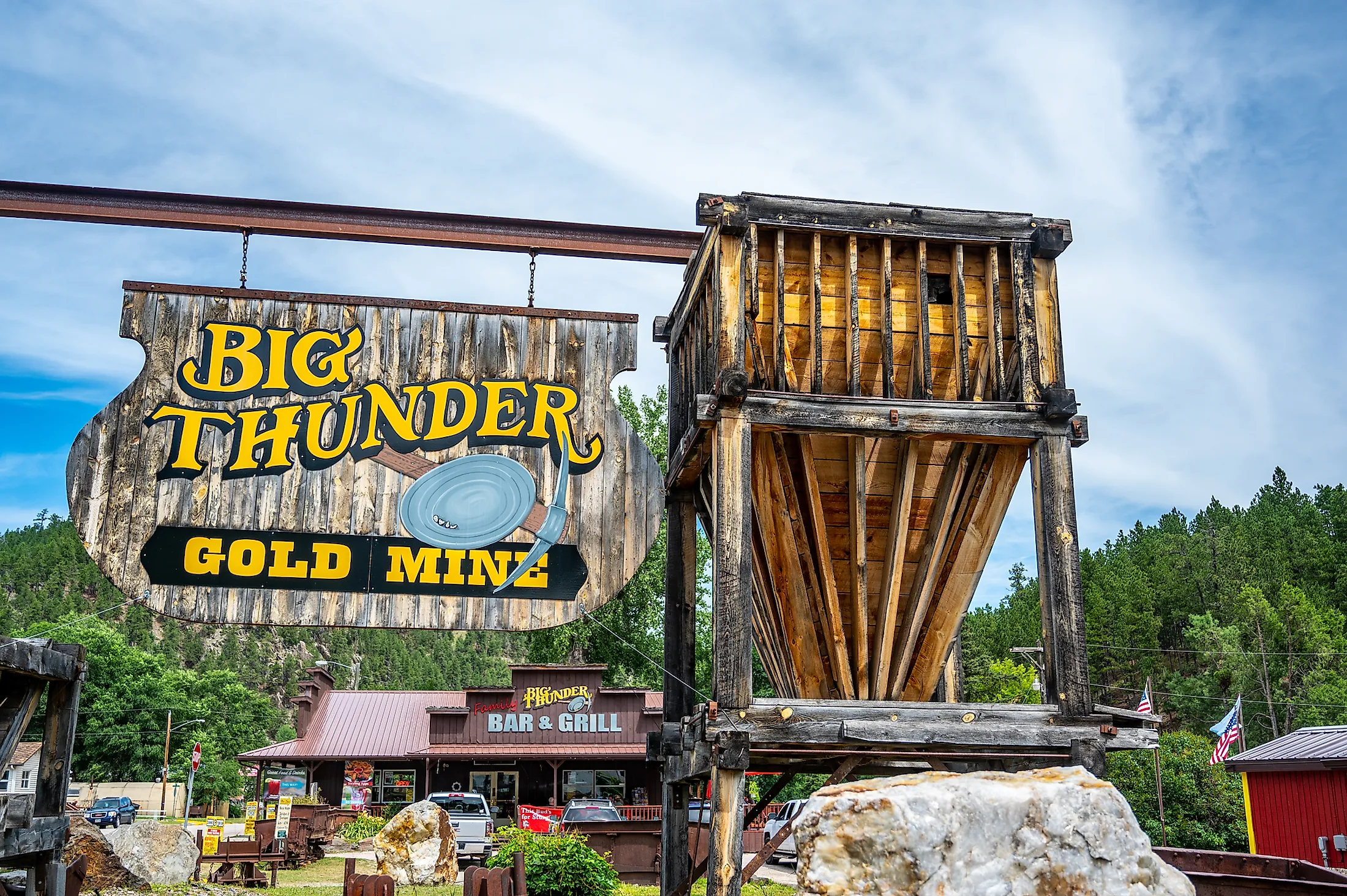
Black Hills Gold Rush
The Black Hills Gold Rush was a rapid movement of people that occurred when a goldfield was discovered in the Black Hills region within the Dakota Territory in the United States. The 1874 Custer Expedition kickstarted the rush upon discovering a gold stronghold after searching for the source of the trace gold within the Deadwood and Whitewood creeks. The gold rush reached a peak within the 1876-1877 period upon the establishment of the Homestake Mine, which then proved to be one of the most significant gold discoveries worldwide.
The Custer Expedition
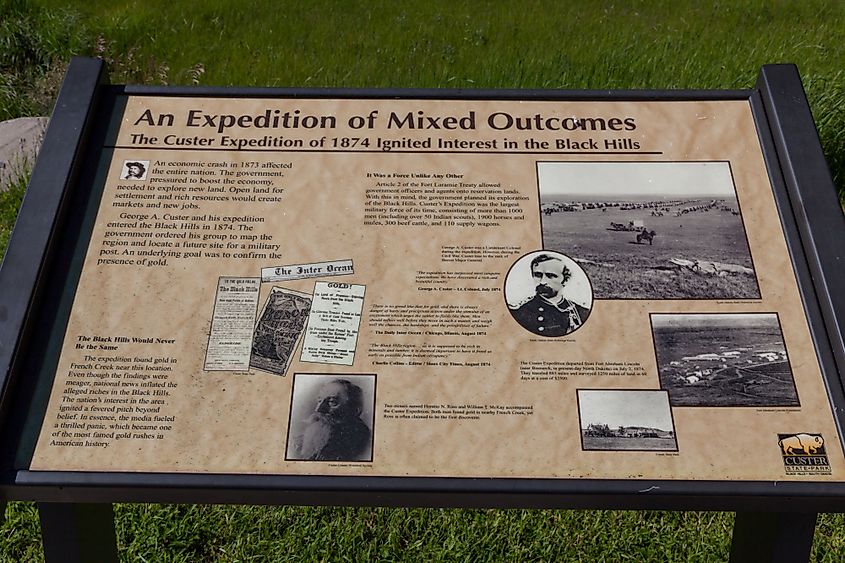
There had always been rumors of gold within the Black Hills region that stretched back to the early 19th century. One such gold sighting was when Roman Catholic missionary Father De Smet reportedly witnessed Sioux Native Americans carrying gold that they claimed originated from the Black Hills. In response to such rumors, Lieutenant George Armstrong Custer led an expedition of over 1,000 men in 1874 in search of gold. This expedition soon came to be known as the Custer Expedition. The expedition launched from Fort Abraham Lincoln, currently modern-day Bismark in North Dakota, towards the uncharted South Dakota Black Hills. In addition to assessing the possibility of gold mining, the expedition sought to locate a route to the southwest and establish possible locations for a fort. The expedition also led to the establishment of the towns of Sheridan, Pactacola, and Hill City.
Through the expedition, two miners associated with the mission discovered small amounts of gold nearby today’s Custer, South Dakota. More traces of gold were reported within the rivers by other civilian experts within the undertaking. As the news spread, people began flocking to the southern Black Hills searching for gold, thus marking the beginning of the rush. However, findings of gold proved to be meager overall, which subsequently led to people searching for other locations with a higher gold yield.
Native Americans And The Treaty of Laramie
The Black Hills area was owned by the Sioux group of Native Americans, also known as the Oceti Sakowin. Given the sacred significance of the land to the Sioux, the Treaty of Fort Laramie, also known as the Sioux Treaty, was established in 1851. The treaty aimed to establish an agreement between the Sioux Native Americans and the United States, whereby the Sioux were granted ownership of the Black Hills region. This 17-article treaty also demonstrated how the US government would punish and hold accountable any White settlers who proceeded to commit any crimes towards the Native Americans. However, despite this treaty’s prohibitions, the Custer Expedition still crossed into the Sioux territories, searching for gold.
The Discoveries At French, Deadwood, Whitewood Creeks
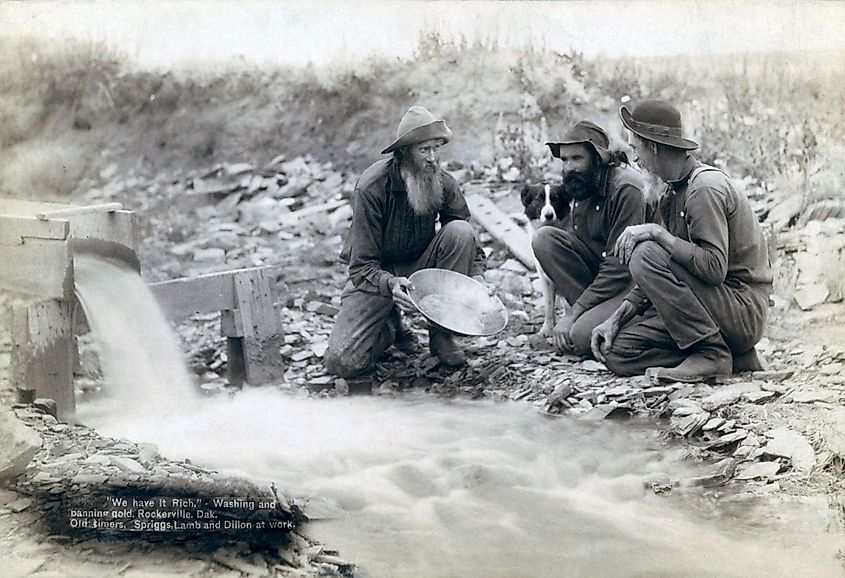
Upon reaching the French Creek, significant gold deposits were discovered at numerous points. This discovery was immediately carried by courier to Fort Laramie in Wyoming, leading to the Black Hill Gold Rush’s true beginnings. As gold findings began to slim out, prospectors began moving further towards the south, searching for more gold. This soon led them towards the creeks of Deadwood and Whitewood, whereby notable patches of placer gold could be located. Placer gold is defined as gold that is found mixed in with dirt and rock around streams as it is eroded from hard-rock deposits. Therefore, these prospectors knew that such placer gold must have a source, and thus the search was on.
Homestake Mine
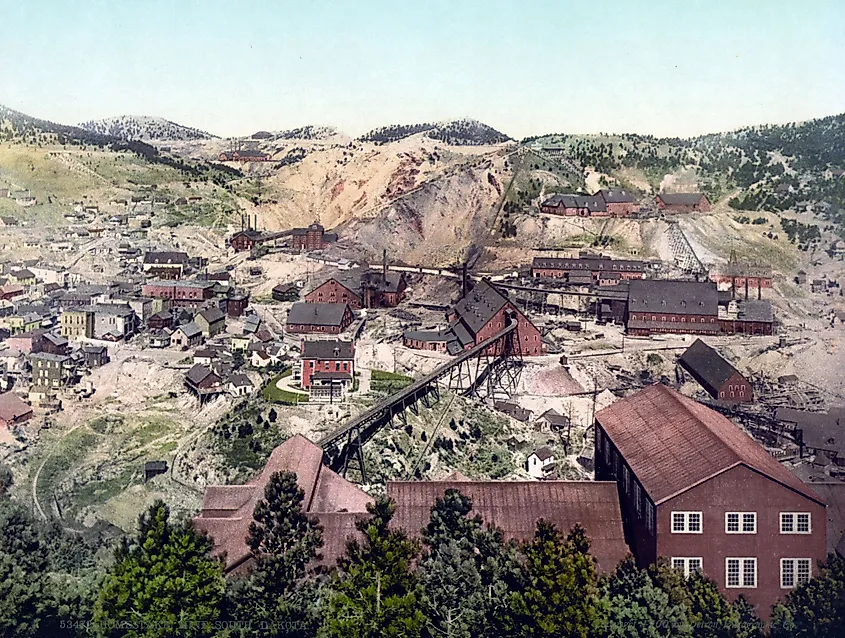
While some prospectors sought to make a fortune out of the placer gold found in the creeks, others went in search of the true source of this loose gold. Given the appropriate knowledge some of these prospectors held, they knew that these sources are typically within rock and quartz formations. Thus, in 1876, the brothers Moses and Fred Manuel discovered the actual mother lode deposit of gold from which all the placer gold had initially come from. Located near present-day Lead, South Dakota, the brothers staked their claim and called their deposit the Homestake Mine.
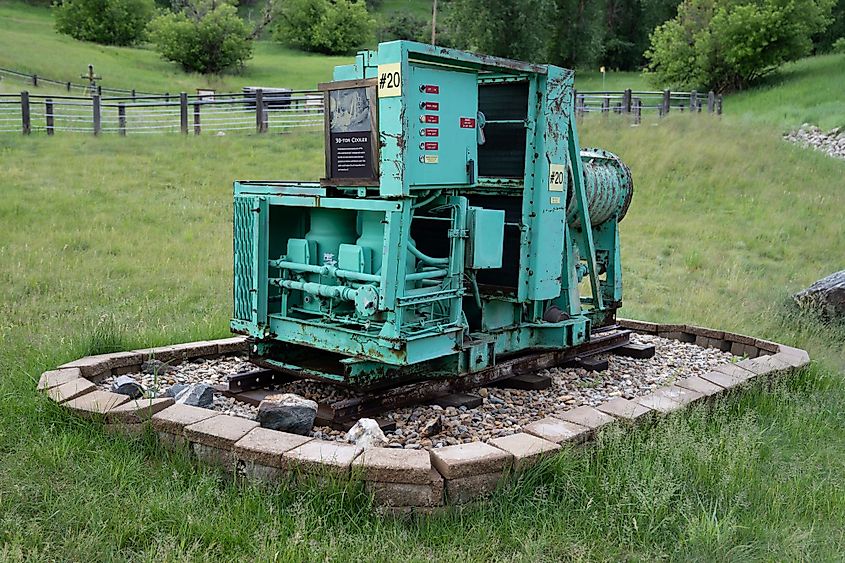
The Homestake Mine was then sold to a group of out-of-state investors for a total of $70,000. However, the brothers had no idea just how significant their find was. In the 125 years to come, the Homestake Mine proved to be the most significant of gold mines in the entire history of America, as it singlehandedly supplied 10% of the world’s gold supply and yielded well over 40 million ounces of gold, which amounted to a whopping $1 billion. The Homestake Mine was genuinely unique when compared to other mines, as its gold was free-milling. Therefore, in contrast to how refractory gold was chemically bonded to rock and exceedingly difficult to remove in different locations in the region, the Homestake Mine’s free-milling gold could be quickly released by simply crushing the quartz.
The Great Depression And The Decline Of The Gold Industry
Upon the dawn of the Great Depression, Roosevelt raised the price of gold to $35 per ounce as he hoped this would ultimately aid the nation’s overall finances. Thus, although the remainder of the country continued facing the effects of the Depression, the gold industry skyrocketed. However, when World War II commenced, all gold mines were ordered to close as the federal government classified mining as a nonessential industry. As a result, the Black Hills region’s economy significantly suffered. The economy was so hard hit that even after the war ended, mining companies struggled to regain their former glory within a landscape of post-war prosperity. Gold mines in the region continued to close due to the high escalation of labor and supply prices. The Homestake Mine was the only mine capable of withstanding all these pressures and continued to prosper until its closure in 2002.











